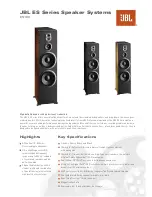
Good practice requires wrapping of the installed heating system
with an appropriate metal foil prior to installation of the thermal
insulation. This is especially so at places where intimate
contact between heat-tracing cable and heated surface is not
possible, such as valves or flanges where a suitable heat sink of
temperature rated metal foil and wire cloth band may be used to
improve heat-transfer. Also refer to design documentation, which
may specify this requirement as well as material type, thickness
etc... Further details may also be described in local insulation
standards.
Check that all HC or HD cables are mechanically protected and
properly sealed at all places where they penetrate the insulation
cladding.
Ensure that all places are sealed where thermostat capillaries,
sensor cables or support brackets etc. exit the cladding.
6.3 marking
Install “Electric Traced” signs on the insulation cladding along
piping at suitable intervals (3-5 m intervals recommended) on
alternate sides as a warning.
Mark on outside of insulation the location of any heating cable
components like connection points, splices etc.
mi-heating unit identification:
Each MI heating unit is supplied with an identification tag with
important details about the type and operation conditions of the
unit.
In hazardous areas, the cable tag is mandatory.
The tag contains the area classification in addition to other
relevant design information.
28
















































